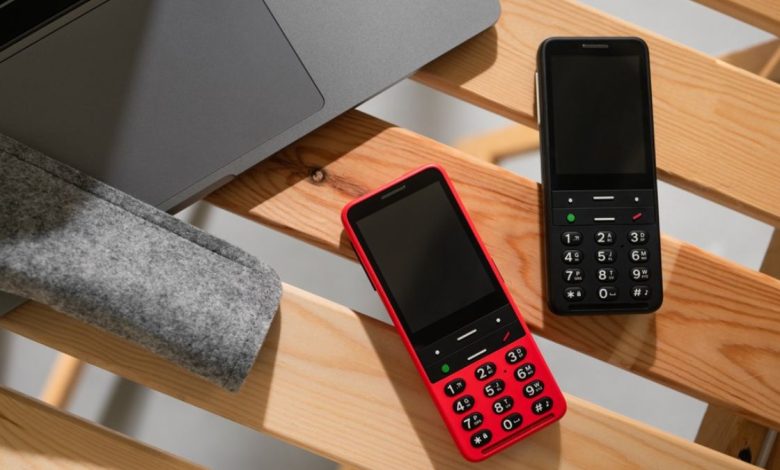New Button-Based Smartphone for the Visually Impaired Launches in SA

In an exciting move towards enhancing accessibility, Vodacom has officially launched a new button-based smartphone specifically designed for the visually impaired in South Africa. The innovative Blindshell Classic 2 smartphone is set to provide users with an intuitive, tactile interface and an improved experience, all while ensuring affordability and practicality for individuals who rely on touchless navigation.

What is the significance of this groundbreaking launch, its impact on the visually impaired community, and how the smartphone for the visually impaired launches in SA aligns with Vodacom’s commitment to digital inclusion?
The Need for a Button-Based Smartphone in South Africa
For millions of visually impaired South Africans, modern smartphones can pose significant challenges. Touchscreen interfaces, while innovative, can be difficult to navigate without the aid of sight, leaving many users excluded from the digital world. This gap has led to the need for more accessible technologies that provide a simpler, more tactile experience.
ALSO READ: Spam Calls Surge in South Africa: Why Apps, Laws, and Tech Fixes Aren’t Enough
The developers created the Blindshell Classic 2, a new button-based smartphone, to meet this need, featuring physical buttons and voice-guided navigation. Unlike many smartphones that rely heavily on touchscreens, this device offers tactile buttons, making it easier for users to dial numbers, send messages, and access various functions with just the press of a button.
Key Features of the New Button-Based Smartphone
Vodacom’s Blindshell Classic 2 is packed with user-friendly features specifically aimed at improving the daily lives of the visually impaired. Here are some of the key highlights:
- Tactile Buttons: The most prominent feature of the Blindshell Classic 2 is its physical buttons. These buttons are large, well-spaced, and designed for easy identification by touch, enabling users to navigate through the phone’s interface with ease.
- Voice-Guided Navigation: The smartphone provides clear, spoken feedback, guiding users through the phone’s features. This ensures that even those with limited vision can perform tasks like making calls, sending texts, and accessing apps without any difficulty.
- Simplified User Interface: The interface is designed to be intuitive, with large icons and voice prompts, helping users quickly find and use the phone’s core functions.
- Affordability: Vodacom has ensured that the Blindshell Classic 2 is available on both prepaid and contract plans, making the device accessible to a wide range of users. This commitment to affordability is key in addressing the digital divide faced by many visually impaired individuals.
Impact of the Smartphone for the Visually Impaired Launches in SA
The launch of the Blindshell Classic 2 smartphone represents more than just a product release; it is a significant step toward creating a more inclusive society. In his remarks during the official launch, Vodacom Group CEO Shameel Joosub highlighted the importance of addressing the needs of people with disabilities. He stated:
“True inclusion begins with understanding the everyday challenges faced by persons with disabilities and working together to co-create solutions that genuinely meet their needs.”
By launching this smartphone for the visually impaired in South Africa, Vodacom is not only offering a more accessible digital experience but also encouraging other companies to consider the needs of disabled users when designing products and services.
ALSO READ: Stay Safe: Gauteng Launches e-Panic App for Quick Emergency Alerts
The Blindshell Classic 2: A Game-Changer for Accessibility
Vodacom’s initiative highlights the power of technology in transforming lives. The Blindshell Classic 2 is an essential tool for ensuring that visually impaired individuals can engage with digital technologies, from staying connected with family and friends to accessing critical services.
In addition to the physical buttons and voice prompts, the Blindshell Classic 2 comes with features like an FM radio, GPS for navigation, and an easy-to-use camera, making it a versatile and practical device for everyday use.
Having a smartphone that caters specifically to their needs could vastly improve their independence and quality of life. Vodacom is providing visually impaired individuals with the tools they need to thrive in an increasingly digital world.
Expert Opinions and Community Response
The Blindshell Classic 2 is a significant breakthrough in making smartphones more accessible for individuals with disabilities. Dr. Natalie Louw, a technology accessibility expert at the University of Cape Town, shared her thoughts:
“This launch is an important step in addressing the digital divide faced by South Africans with visual impairments. Vodacom’s efforts demonstrate that technology, when designed inclusively, has the potential to change lives.”
The South African disability community has also shown overwhelming support for the initiative. The South African National Council for the Blind (SACB) praised Vodacom’s commitment to creating accessible products. In a recent statement, the SACB expressed:
“We are excited to see more innovations like the Blindshell Classic 2 that cater to the needs of the visually impaired, empowering them to access services that others take for granted.”
A Step Towards True Inclusion
The launch of the Blindshell Classic 2 button-based smartphone for the visually impaired in South Africa marks a significant milestone in digital accessibility. Vodacom’s focus on simplicity, affordability, and ease of use highlights the need for disability inclusion in the digital revolution. Vodacom empowers visually impaired South Africans with a tailored smartphone, setting a precedent for future accessible technology innovations.
ALSO READ: Honor 400 & 400 Pro Redefine Mobile Photography with AI SuperZoom


